Two species of mousebird call Rwanda home – the Speckled Mousebird and the Blue-naped Mousebird. Both are breeding residents and can be found in their preferred habitats throughout the year. Whilst they are considered sedentary, they will make local seasonal movements in response to flowering and fruiting trees and plants.
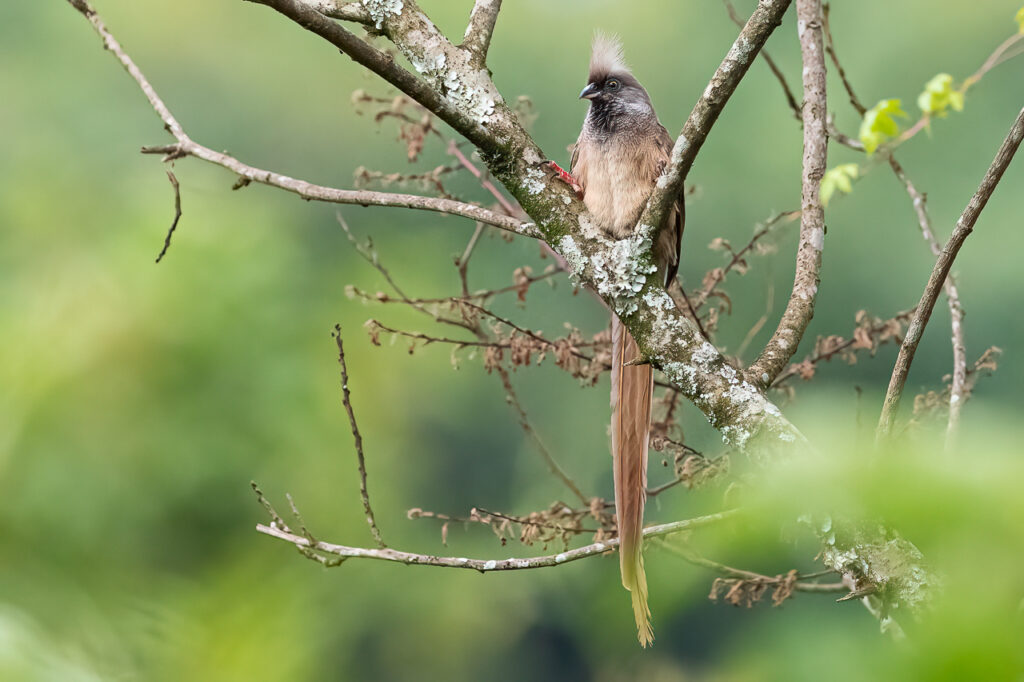
Both species prefer open scrub, savanna, and Acacia woodland. Where the two species overlap geographically the Blue-naped Mousebird will be found in drier habitats, which means that it is Speckled Mousebird that is more widespread across Rwanda, and it is the species that can often be found foraging in bushes on the outskirts of villages and towns, and in gardens. Akagera National Park is a great example of a location where the distributions of the two species overlap and both species can be found, although Blue-naped Mousebird is slightly more elusive… Mousebirds have short, rounded wings, so look out for fast, direct flights with rapid wing beats interspersed with gliding. Mousebirds calls are both noisy and unique – have a listen (https://xeno-canto.org/species/Colius-striatus).
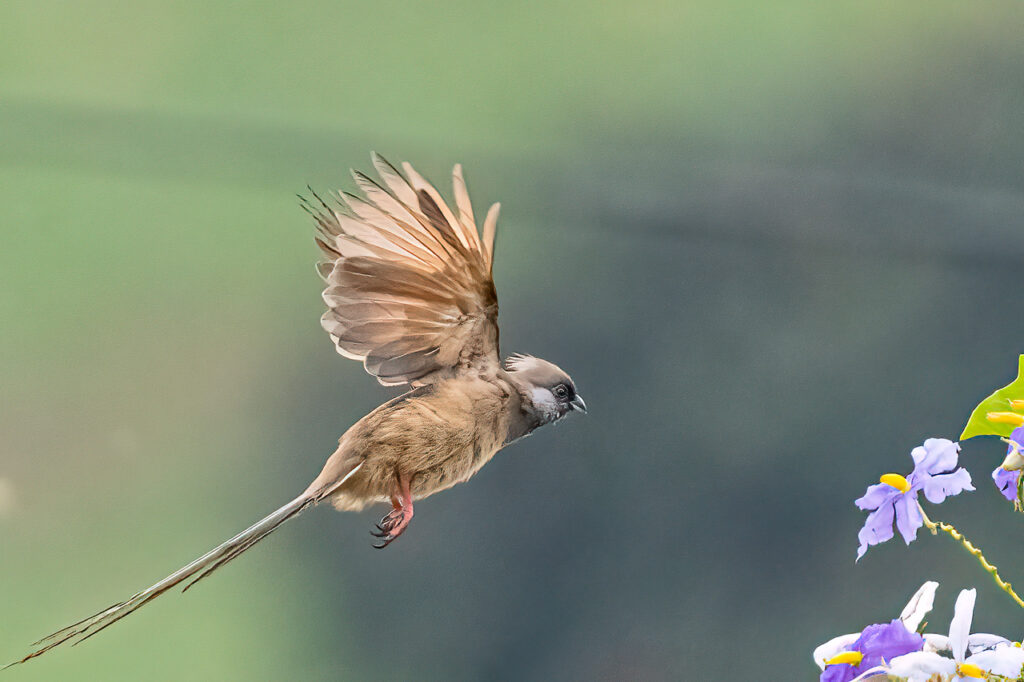
Rwanda’s two mousebirds belong to the Coliidae family of birds, which is made up entirely of Africa (and the world’s) six mousebird species. They get the ‘mousebird’ name from their long-graduated tail feathers, which make up more than half of their total length. The tails are composed of soft hair-like feathers which are ‘mousey-brown-grey’, and somewhat resemble a mouse’s tail. Mousebirds have strong feet with very versatile toes. Unlike most birds that have three front-facing toes and one hind toe, the outer and hind toes of mousebirds are reversible – they can turn these toes to either face forwards or backwards – which is crucial for agile movement and hanging from branches. Their legs are also positioned rather far forward, which means that their movement through trees and bushes often resembles that of a mouse! These and other modifications have evolved to enable the mousebirds to have a nearly exclusively vegetarian diet, their diet consists largely of leaves, stems and shoots and is supplemented with berries and fruit. Their foraging behaviour means they play a crucial role as seed dispersers. They have short, strong bills with a sharp cutting edge used for cutting off pieces of vegetation. In order to digest a high-cellulose diet a fermentation process occurs in their gut to break down the food. To help this process, mousebirds are often seen hanging from branches ‘sunning’ themselves with their bellies exposed to the sun. By doing so their stomachs and the contents is heated up, which speeds up the fermentation process. Young leaves are often selected late in the day for fermentation during the night. As mousebirds feed on fruits, they inadvertently pick up seeds, these seeds pass through their digestive system and are later deposited in different locations to the parent plant or tree, facilitating the process of seed dispersal. This behaviour contributes to the regeneration of plant species and the maintenance of biodiversity and eco-systems.
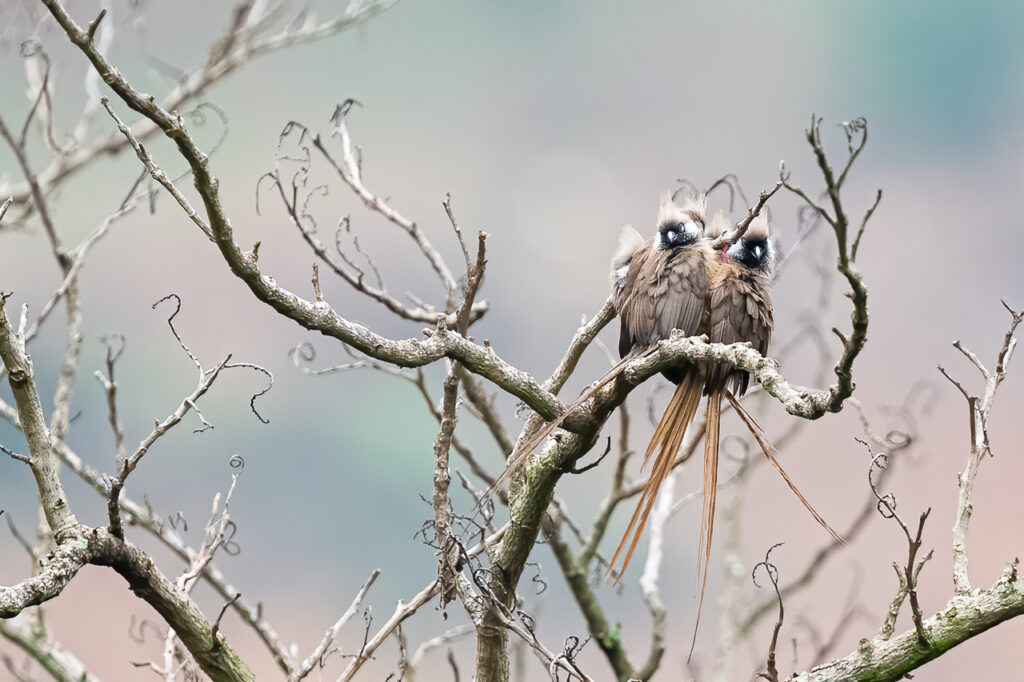
Mousebirds are both sociable and gregarious all year round, feeding as a group and roosting together in huddles – again rather like mice! Besides sharing warmth, huddles are thought to maintain and strengthen group cohesion. Interestingly, Blue-naped Mousebirds will fly from one feeding area to another as a flock, whilst Speckled Mousebirds will often fly individually one after the other (this is a good clue for species identification!). Mousebird courtship includes ‘bouncing displays’ practiced by the male Blue-naped Mousebird and male and female Speckled Mousebird, as well as mutual feeding and mutual preening (allopreening). Mousebirds are cooperative breeders: other group members who are usually related to the breeding pair will help with nest construction, incubation, chick-rearing duties, and defending the nest site. Mousebirds build cup nests in dense vegetation, such as hedgerows and thick undergrowth, which provides some protection against predators.
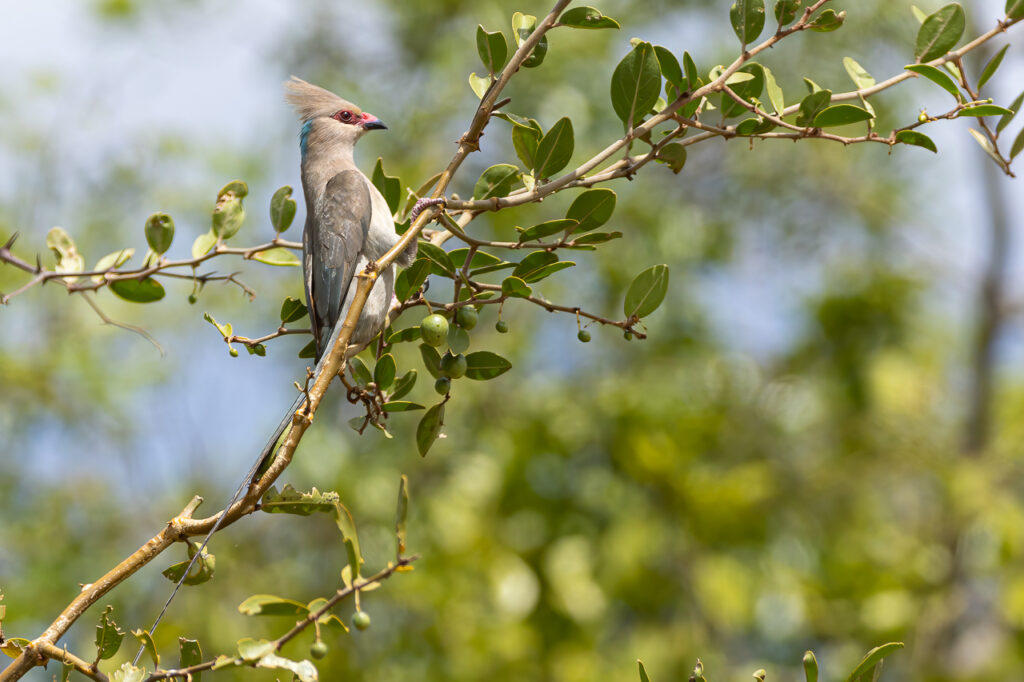
As representatives of a bird family that is unique to Africa mousebirds are a species part of Rwanda’s bird fauna. The combination of how they look and behave make these awesome birds’ great fun to stop and watch, in one of Rwanda’s national parks or a café garden – wherever you might find them!
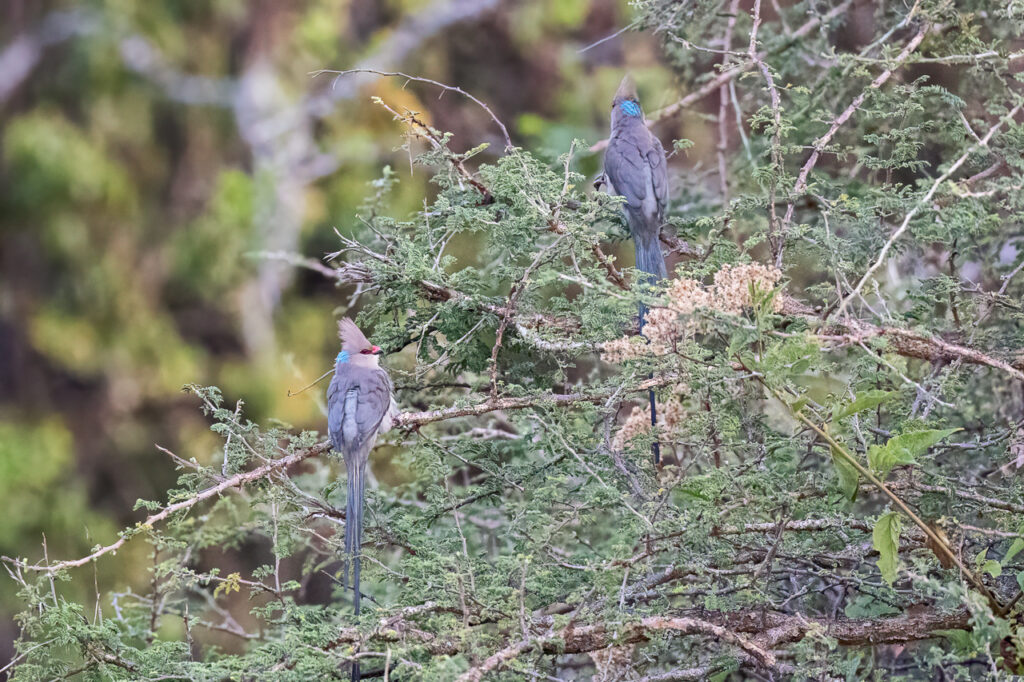

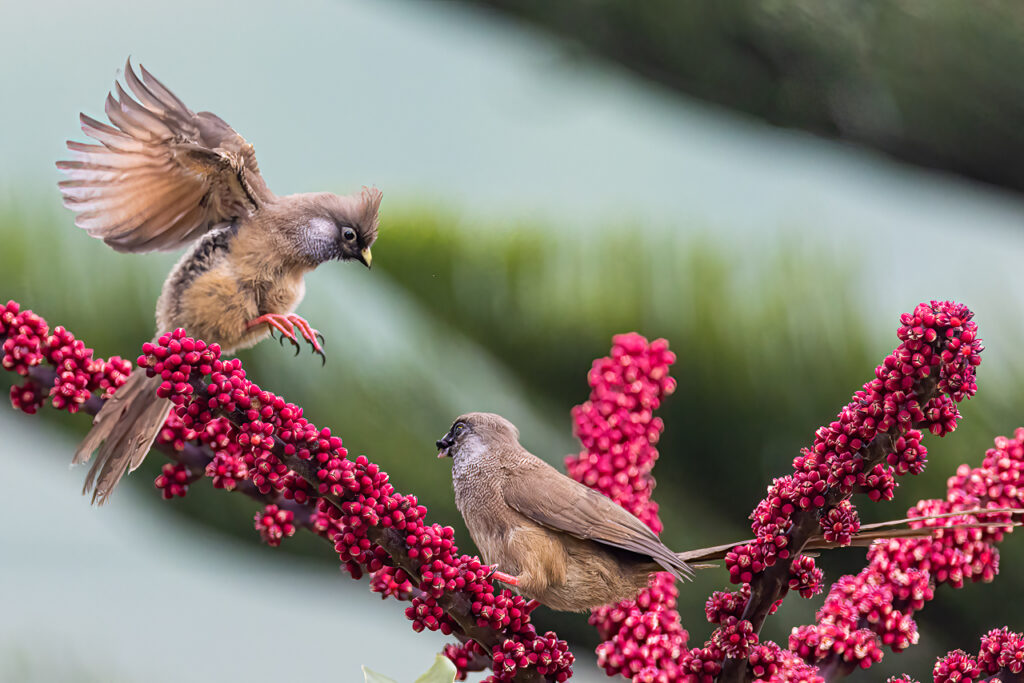
wonderful photos and details as we’ve come to expect from Will